Choosing Your Wide Plank Floor
The process of choosing flooring for your home can be one of the most rewarding and challenging adventures of being a homeowner. There are many available options to choose from, and each choice you make will have a lasting impact on the look and feel of your home.
At times, the sheer volume of all those options can make the selection process a bit confusing. To simplify your life, we've put together a guide to the six main choices you will be making while selecting your flooring. We have also fielded some of the most frequently asked questions which tend to come up during the process.
-
Jul 20, 2017
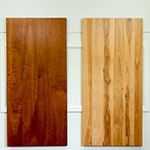
Choose your favorite wood species
“What species of wood should I use for my floor?” This is perhaps the most intimidating question as it has many possible answers.
Before you look at all the options, imagine your room. What do you use it for? Is it a secluded master bedroom or a high traffic foyer? What does the room feel like? Is it light and airy or dark and dramatic? Is it formal or casual?
The main criteria we suggest you use when choosing a wood species are: durability needs, grain preference, color preference, and budget.
An excellent way to gauge species’ durability is by its Janka scale rating. The Janka scale rates wood based on how hard it is and that is useful to you because a harder wood, with a higher Janka number, is more resistant to impact damage. Some of our hardest hardwoods are hickory and maple.
When you look at a wood floor, one of the first traits your eye picks up on is the grain of the wood and what type of pattern it has. Each species has its own unique grain pattern, so look at photos and samples to get a feel for what species matches your vision. For example, birch is known for its gentle, weaving grain patterns and dramatic cathedral markings. These create a feeling of movement as you look across the floor. Prominent knots are common in pine flooring lending that species a rustic, historical feel.
The natural color of wood flooring can be modified with finishes, however if you prefer to remain true to the original hue and you are considering a clear, water-based finish, the natural color of your wood species is especially relevant.
As is the case with paint colors, a darker color wood like walnut can be a riveting focal point in a large, elegant room while a lighter color wood such as ash will create a bright, airy feeling in a small space.
For a warm, cozy feel, consider a deep red toned wood like cherry or the rich amber hue of heart pine.
The final determining factor in species selection is budget. We are proud of our mill-direct pricing and would be pleased to discuss how your preferred species fits into your budget.
-
Jul 20, 2017
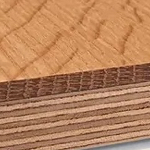
Is a solid or an engineered wood floor right for you?
The answer to this question is determined primarily by the location you will be installing the flooring in as well as by the type of sub-flooring in place.
Is your flooring going into a garden level or basement (below grade) area? Will it be placed over a concrete subfloor or a radiant heat source? Does the room you are flooring tend to have humidity and temperature fluctuations? Is the room in a location where the floor is more likely to be exposed to some moisture?
In these situations, an engineered floor—a layered real wood flooring product—is your recommended flooring type. It provides greater stability and less movement under these conditions than solid wood flooring.
For ground level and higher rooms (above grade) with plywood subfloors, stable humidity and temperature levels, and no proclivity to excess moisture, either solid or engineered flooring may be used.
The main advantage of solid flooring is its ability to be refinished multiple times. As previously mentioned, a potential drawback, depending on installation area, is solid wood’s increased tendency to shrink/expand with humidity and temperature variations.
Engineered flooring can be applied in locations where solid wood flooring cannot and it is more forgiving of climate variations. In order to provide these benefits, engineered wood is constructed using layers. The top layer, or wear layer, is the one which may be refinished. Our engineered flooring has a thicker wear layer than the industry standard, allowing for multiple refinishings.
-
Jul 20, 2017
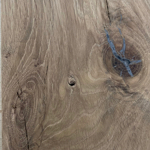
Choose your preferred wood grade
Our hardwood flooring comes in several different “grades” depending on the species. The grades are based on the physical characteristics of the wood and are used to categorize particular planks.
A “premium” grade plank has the highest degree of uniformity in terms of both color and appearance. It contains very minimal character marks and tends to feel most upscale and polished.
"Select" grade planks have some natural color variations and character marks but still appear mainly uniform.
A plank of a "character" grade features numerous character marks as well as a varied color and grain appearance. It generally feels more casual and rustic.
-
Jul 20, 2017
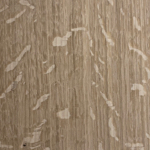
What "cut" is most appealing to you?
The way in which a log is cut has a great impact on the appearance of the final wood planks which are made from it.
We offer plainsawn, riftsawn, quarter sawn, and live sawn options (options vary by species).
Plainsawn
Plain sawn (also known as flat sawn) is the most traditional cut used for flooring. It is produced when the log is cut parallel to the growth rings, resulting in a beautiful open grain pattern with "cathedral" patterning.
Riftsawn
By contrast, riftsawn planks are known for their uniform grain appearance. Rift sawn planks are produced when a log is quarter sawn. It is the most difficult to produce due to it being cut from the back third of the log. It results in a more straight grain with a contemporary feel, and exhibits few if any medullary rays (flecking). It's difficult to produce a wide rift sawn board because typically the wider the rift, the lower the desirable rift characteristics that are exhibited.
Quarter Sawn
The quarter sawn cut is produced when a log is sawn perpendicular to the growth rings. When the growth rings are perpendicular to the surface, straight grain and medullary rays (flecking) are displayed. Quarter sawn planks can only be produced from the largest and highest quality timber. These planks are more dimensionally stable than plain sawn planks.
Live sawn
Live sawn planks combine the visual elements of plain/rift/quarter sawn techniques, resulting in a complex grain pattern.
One of the species that best showcases the dramatic influence different cuts have on finished appearance is oak. We cut our white oak wide plank flooring for a variety of customer preferences: plain sawn shows flat grain and figuring, rift sawn reveals a straight, vertical grain, and rift and quarter-sawn white oak draws out the natural flecks and swirls in the wood. All cuts result in a long lasting hardwood floor that mellows to a golden patina.
-
Jul 20, 2017
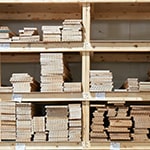
Now think about your preferred plank width
Wood flooring comes both in “strips” (lengths of flooring less than 3 inches wide) and in “wide planks” which are wider than 3”.
Which width of wood floor plank is right for you? At Vermont Plank Flooring we specialize in wide planks because of their inherent strength and stability as well as the visual appeal. All of our planks are wider than 3 inches, with the widest, red oak, measuring up to 19 inches in width.
With this variety of widths, you are given an additional choice between using all uniform width or random widths of planks for your floor.
There's really no formula here—it's just a question of your preference. Random-width planks create the visual illusion of a larger floor space, making them an excellent choice for a smaller room. They also create a more rustic-looking floor than one constructed with uniform-width planks.
For very large rooms, on the other hand, selecting the widest planks available in a uniform width is a popular choice. These expansive floors look more polished, and more up-scale, regardless of the wood species chosen.
-
Jul 20, 2017
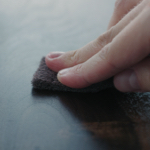
Choose your flooring finish
The final selection point is the finish of your wood floor. A finish is important because it provides long-term protection for the wood along with determining how shiny or matte your floor appears.
We offer a wide range of finishes and if you have something special in mind, we are happy to work with you to create your unique look.
Some popular choices are water-based finishes which are clear, durable, and resistant to yellowing over time.
If you are seeking a finish which will add a little visual warmth to your floor, an oil-based choice may be the way to go. This type of finish is amber in color and is also very durable.
No matter which finish you choose, proper maintenance will still be important to maximizing the long-term beauty and performance of your wood flooring. Our finishes are all covered by our finish warranty of 25 years for residential and 5 years for commercial installations.
We offer you a choice of either pre-finished or on-site finished flooring
A pre-finished floor leads to a faster and easier install for DIYers. You'll be able to walk on your floor immediately without waiting for the finish to dry and cure (which can take days and sometimes weeks.) For floors with a polyurethane finish, the curing takes place at our manufacturing facility, NOT in your home, thereby eliminating the risk of your family breathing potentially harmful solvents and resins. There is also no dust in your home from on-site sanding.
An on-site finished floor takes less time to produce. Pre-finished floors require a micro-bevel on either two or all four sides, but on-site finished floors do not. (Take a look at the White Oak with White Lye finish flooring sample to see micro-bevels.) On-site sanding will remove any undulations caused by an uneven subfloor. Finally, the finished floor has a more custom, classic look.







